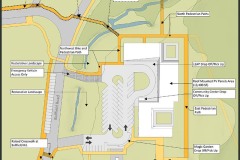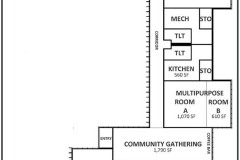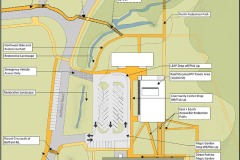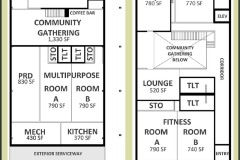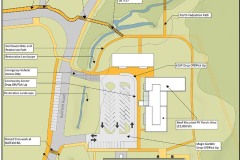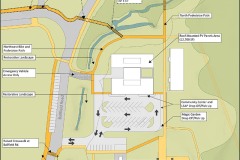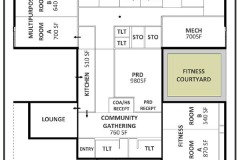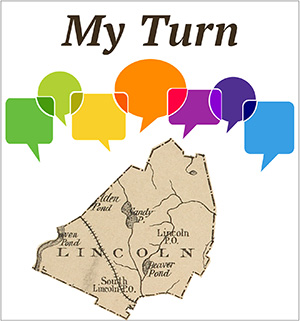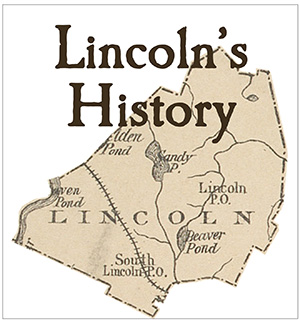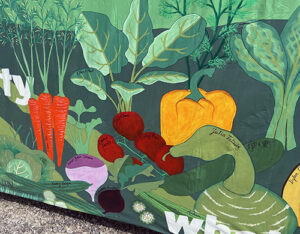 In the September 28 story headlined “Community center options readied for SOTT,” the image gallery at the bottom has been updated to include the newest versions supplied by ICON Architects.
In the September 28 story headlined “Community center options readied for SOTT,” the image gallery at the bottom has been updated to include the newest versions supplied by ICON Architects.
Community center options readied for SOTT
(Editor’s note: the image gallery at the bottom of this post was updated on September 29.)
After some final tweaks this week, the community center design options are ready for prime time at Saturday’s State of the Town meeting. Meanwhile, some residents are embarking on a fund-raising effort to defray some of the cost.
As before, there are three main options pegged at 100%, 75%, and 50% of the $25 million estimate for the 2018 concept. There are one-story and two-story versions of Option 2 (2a and 2b) with almost equivalent square footage and price tags.
Option C, unlike the other two, does not include renovating pod C for LEAP — and some members of the Community Center Building Committee remarked at their September 27 meeting that this is something of a false choice. Pod C definitely needs work and it would make more sense to do it along with the rest of the project rather than put it off and have costs escalate even further — not to mention construction disruption around the new community center, CCBC chair Sarah Chester said.
Adding the $3.4 million cost of renovating pod C would bring Option 3 from $12.5 million to $15.99 million — still less than Options 2a and 2b ($18.75 million and $18.72 million respectively). However, that 50% option would result in a community center smaller than the 13,000 square foot minimum recommended.
CCBC member Dilla Tingley said she would advise SOTT attendees that “if you want that option plus LEAP [renovation], please look at the 75% options because they’re a better solution” from a design perspective.
An earlier issue of whether or how to include space for the school maintenance functions now in pod A has been settled, as the schools have agreed to locate that facility in the lower level of the main Hartwell building. However, there will be some as-yet-unknown cost for the move, since it’s no longer part of the community center project budget.
SOTT attendees will see the design options on large posters and have the opportunity to express a preference on a paper form or later online. Forms and a dropbox will also be available at Town Hall for those who can’t attend SOTT or want to complete the form after more time for thought.
“We are starting to approach individuals who we think are supportive of the community center and have the ability to make significant contributions,” said Peter von Mertens, a member of the fundraising group. “We have a challenge grant of $1 million from the Friends of the Lincoln Council on Aging. We plan to meet that by getting several major donations and also raise funds through naming opportunities for spaces in the community center building such as the lobby/lounge, multipurpose room, and the exercise and fitness area. As the project gets more specific in its design we can get more specific with naming opportunities.”
The group has approached one foundation for financing the kitchen area, “and we plan to reach out to several others,” he added. “We have a pledge form that allows people to make a gift that will only be given after the town votes to have the project go forward.”
Below are some screenshots from the September 27 presentation by ICON architects. Complete information will be available on posters and handouts at Saturday’s State of the Town meeting.
Click on the images below to see larger versions with captions.
My Turn: Codman Community Farms celebrates 50th anniversary
By the CCF 50th Anniversary Capital Campaign Committee
On the 50th anniversary of the founding of Codman Community Farms (CCF), we have much to celebrate. Created as a 501(c)(3) nonprofit in 1973, the farm has evolved over time, but our mission has always been to operate a working farm that preserves Lincoln’s rural character, highlights the importance of local farming, features heritage breeds and locally sourced food, and invites community involvement through educational opportunities and access to this unique historic property.
The original Codman family farm was established in the early 19th century on the former estate of Chambers Russell, one of Lincoln’s founders. The original farm had been in continuous operation for over 150 years, with respectable dairy, vegetable, and fruit operations. It was one of only a handful of working farms in Lincoln remaining after the Second World War.
When Dorothy Codman died in 1967, her will provided for the transfer of the barns and the surrounding acreage to the Ogden Codman Trust. In 1970, the town purchased the property and in 1973 voted at Town Meeting to create a nonprofit, Codman Community Farms, Inc., to run its operation. Since then, the town has owned the land, the barns, and the adjoining farmhouse comprising the 17-acre farm in the heart of Lincoln upon which CCF operates.
Over the past five decades years, the farm has been a vital part of our community. For 50 years, we have engaged children in our agricultural mission as they watch piglets come into the world, collect fresh eggs from the chickens, feed a goat, or marvel at our beautiful Red Devon cattle munching on sweet grass. For 50 years, we have gathered together in the fall to celebrate the harvest with a Harvest Feast and Fair – young and old alike. Yet we continue to grow and welcome new events and new traditions as well.
None of us can take the farm for granted. Since 1973, the farm has seen many tough years, with significant financial uncertainty due to an outdated farming model, aging equipment, and deteriorating infrastructure. In 2016, after a particularly tough stretch of ten years, the farm hired Pete Lowy as our farm manager, and the improvements since then have been nothing short of amazing. Pete came to us with a clear vision of what was possible and the energy and drive to accomplish those goals. The farm has made great strides under Pete’s leadership along with the support of an active board of directors, a stellar staff, and a talented and dedicated group of volunteers.
To celebrate this special anniversary, we have launched the 50th Anniversary Capital Campaign: Growing Community to raise $1,000,000 to seed and secure the future of Codman Community Farms. The goals of the campaign are to build educational programming and our community engagement, to expand gathering and educational spaces, to protect our historic structures, and to enhance building and grounds safety for all.
As such, we have just completed the new Codman Community Courtyard in front of the main barn to create a safe, non-vehicular gathering space for all to enjoy. Next, we plan to expand our educational gathering spaces by building an educational pavilion behind the main barn, which will be the hub for most of the farm’s educational classes and workshops.
A wheelchair-accessible door will soon replace the narrow side entry to the main barn, and we are working with the town to install a fire suppression system in two historic barns. Once the sprinkler system is in place, we hope to move the farm store to the back of the barn so that we can once again hold community events in our beloved main barn.
As a small community farm trying to accomplish many tasks at the same time, it is incredibly valuable for us to have partners that are willing to join us in investing in local agriculture, soil health, community, and education – the pillars of Codman Community Farms.
Please consider a donation to our 50th Anniversary Capital Campaign – Growing Community, and join the many friends of the farm that have already contributed as we inch our way closer to our goal. Here is a link for more information and a way to contribute.
Members of the 50th Anniversary Capital Campaign Committee are Carol Carmody, Nancy Fleming, Pete Lowy, John LeClaire, Jeff Patterson, Ginger Reiner, and Nick Whitman.
“My Turn” is a forum for readers to offer their letters to the editor or views on any subject of interest to other Lincolnites. Submissions must be signed with the writer’s name and street address and sent via email to lincolnsquirrelnews@gmail.com. Items will be edited for punctuation, spelling, style, etc., and will be published at the discretion of the editor. Submissions containing personal attacks, errors of fact, or other inappropriate material will not be published.
Did you know… Julia Child got a boost from Lincoln’s Avis DeVoto?
By Sara Mattes
Avis and her husband Bernard lived in the historic 1818 Hoar house on Weston Road, across from the Pierce House. Bernard DeVoto was an author of a series of popular histories of the American West (including the Pulitzer-Prize-winning Across the Wide Missouri), as well as books on Mark Twain and a regular column, “The Easy Chair,” in Harper’s Magazine.
It was one of Bernard’s “Easy Chair” articles, an essay on the poor quality of American knives, that sparked the DeVoto’s life-long friendship with Julia and Paul Child, and ultimately the publication of Mastering the Art of French Cooking.
After reading the article on knives, Julia sent a fan letter from Paris to Bernard. Avis, who read all of Bernard’s mail, responded. That was the beginning of a pen-pal relationship that led to Avis’s interest in Julia’s culinary work in France and their enduring friendship.
Avis soon learned that Julia was struggling to find a publisher for her newly completed cookbook. Avis and Bernard had many friends in the publishing business, so she first approached her friend and Lincoln neighbor, Paul Brooks, who was an editor at Houghton Mifflin.
But Houghton Mifflin had failed in its earlier attempt at cookbook publishing, so Avis moved her campaign to another friend and frequent dinner guest, Alfred Knopf. She would wow Alfred with dishes that she then revealed to be Julia’s recipes. Knopf took a gamble on the yet-unknown Julia Child, based on Avis’s urgings and her fabulous dinners. In all, a savory bit of Lincoln’s history.
Learn more about the Avis and Bernard DeVoto and their history as eco-warriors at the upcoming Bemis Free Lecture event on Thursday, Oct. 5 at 7 p.m. at Bemis Hall with Nate Schweber, author of This America of Ours: Bernard and Avis DeVoto and the Forgotten Fight to Save the Wilds. This event is sponsored by the Bemis Free Lecture Series, with the Friends of Minute Man National Park, the Lincoln Land Conservation Trust, the Lincoln Historical Society, and the Walden Woods Project.
Sara Mattes is a trustee of the Bemis Free Lecture Series and president of the Lincoln Historical Society. “Lincoln’s History” is an occasional column by the group.
Third multifamily rezoning option omits North Lincoln

The new HCA Option C includes the mall (in yellow) but not any parts of North Lincoln. The dotted circle indicates the required half-mile radius from the train station in which some multifamily housing must be allowed. Click image to enlarge.
Thanks to a change in state guidelines for complying with the Housing Choice Act, Lincoln now has the option of creating a single multifamily district around the train station without involving parts of North Lincoln — unless residents decide they want to rezone those areas.
Residents will see three rezoning options at the State of the Town (SOTT) meeting on Saturday, Sept. 30 starting at 10 a.m. The first two were formulated by the Housing Choice Act Working Group (HCAWG) and consultant Utile before the state’s change in August. Both include three subdistricts in South Lincoln (excluding the mall) as well as either (A) a Lincoln North mixed-use subdistrict or (B) a Battle Road Farm housing subdistrict.
Before August, towns couldn’t allow commercial development in a multifamily housing district as part of their plan to comply with the HCA. This meant that redeveloping the mall as a mixture of ground-floor commercial and housing on the second and third floors wouldn’t satisfy HCA’s multifamily housing requirements, and the mall would have to be rezoned separately in order to allow housing there.
Now the state says that towns can count multifamily housing units they allow in commercial areas. As a result, the two rezoning efforts (HCA compliance and redeveloping the mall) can be folded into a single Option C that includes four South Lincoln subdistricts and none in North Lincoln.
In Lincoln’s rezoned HCA or “3A” subdistricts (named after the relevant section of state law), multifamily housing at 15 units per acre for a total of at least 635 units must be allowed by right, without the need for a special permit or Town Meeting approval. That housing may not be age-restricted, and commercial uses can’t be required in those districts, though now they are allowed since the August change.
The new option met with general approval among officials and residents at a Planning and meeting on September 26 — to the point where some questioned why Options A and B were even still on the table. Given the recent change in HCA guidelines, the town should simply “take the win and go home” rather than add the complexity of offering two other rezoning options, said resident Vicky Diaduk.
“We felt it was worth having a discussion in town and getting people’s feedback to see if there was an overwhelming feeling about one or the other of the options,” Select Board member Jennifer Glass said. In conversations with Battle Road Farm residents, some were in favor of the idea of allowing a coffee shop or a few retail locations in their neighborhood, she noted. (However, as Diaduk pointed out, residents can propose rezoning those areas or any others in the future if they decide they want to.)
HCAWG will host a neighborhood conversation about the proposed HCA zoning options on Thursday, Sept. 28 at 7 p.m. in the Lincoln Woods Community Room (50 Wells Rd.). They have also posted an updated set of FAQs that address issues including the consequences of noncompliance with the HCA (go to the HCAWG page and scroll halfway down to “FAQs – updated September 17, 2023”).
At Saturday’s State of the Town meeting, officials will gather feedback about which of the three zoning options that residents prefer. On October 10, the Select Board, Planning Board, and HCAWG will formally select one option to submit to the state for preapproval in December. Residents must then vote on that rezoning proposal at the Annual Town Meeting in March. That vote requires a simple majority. In past years, zoning changes required a two-thirds majority to pass, but the state changed that requirement as part of the HCA. Affected towns have until December 2024 to have a new multifamily zoning plan in place.
The SOTT meeting will also include presentations and discussion on three other topics: the proposed community center, the town’s new Climate Action Plan, and the Inclusion, Diversity, Equity, & Anti-Racism Action Plan.
Mall redevelopment
Any of the three rezoning proposals would allow the Rural Land Foundation, which owns the mall, to redevelop the main building (Donelan’s and the post office/restaurant building are not being considered as part of this). Civico (which built Oriole Landing) and town officials will work toward a mutually agreeable design; the RLF would then convey the property to the company via a sale or long-term lease. The RLF/Civico partnership is necessary because the town does not have the resources to do the project itself.
The town is also working with The Community Builders, which owns Lincoln Woods, to design an upgrade to the wastewater treatment plant that serves that housing and the mall. That upgrade will also allow development on the town-owned MBTA parking lot at the back of the mall. State grants — which will be mostly unavailable to the town if it doesn’t approve the new 3A zoning — are expected to offset some of the upgrade cost. Construction will be phased to accommodate the existing anchor tenants.
It’s too early in the process for Civico and the town to develop a concrete proposal, other than the general plan of putting two stories with about 50 housing units above the ground-floor retail portion of the mall. Planning Board member Ephraim Flint expressed concern that lack; “without it, you put the [rezoning] vote at risk,” he said. However, because there is already an interested developer, the mall project will likely come to pass in the next few years. Properties in the other districts would need to attract developers to actually result in more housing — a longer-term prospect, officials noted.
My Turn: Lincoln residents address racial justice in our community
By Barbara Slayter
As a Lincoln resident, I am deeply appreciative of this community’s responses to the brutal murder of George Floyd in May 2020. Lincolnites both unofficially and officially sprang into action to help the town create and sustain a welcoming, inclusive, and diverse culture.
The First Parish in Lincoln, where I am a member, launched its Racial Justice Advocates program, a vigorous program of book discussions, videos, documentaries, and lectures on topics such as James Baldwin’s works, housing inequities in the suburbs along the Route 128 corridor, and New England’s role in the slave trade. Its Racial Justice Newsletter has become a regular and widely available source of information about activities pertaining to social justice, both within the First Parish community and beyond.
Among the most inspiring undertakings was Lincoln Public Schools’ 21-day AIDE (Antiracism, Inclusion, Diversity, Equity) Challenge, which offered an amazing compilation of penetrating questions about biases and stereotypes, colonialism, systemic racism, white privilege, and all forms of social injustice. These were accompanied by an extraordinary range of resources — all available with the click of the mouse — from lengthy documents such as Brown University’s report on its various entanglements with slavery, to brief video clips on any topic at hand. The town was invited to join in, and indeed we did, with lively discussions of the questions posed and materials offered. Lincoln teachers and administrators put incredible effort into this 21-day challenge and into making it accessible not only to the schools but also to the entire community.
Now, as the culture wars deepen, I am ever more appreciative of Lincoln’s schools and apprehensive about our nation’s trajectory. According to recent data, 18 states across the country restrict education on race, banning books from the library and discussions in the classroom. I winced as I read just recently that a teacher in an AP English class in South Carolina has been forbidden by the local school board to have her students read Ta-Nehisi Coates’ Between the World and Me, a compelling letter from a Black father to his son about the risks he faces being a Black youth in America. This work, read by a group at the First Parish, was a vital resource in sharpening our understanding of racial dynamics in this country.
It is with this thought in mind that I recognize how fortunate we are to have Lincoln educator and author Ray Anthony Shepard in our midst. Ray has devoted his professional life to educating America’s young adults and also children about the struggles for racial justice. In his most recent book, A Long Time Coming, just published this August, he does so through story and free verse, written in snappy short poems with sharp imagery that pulls the reader into the thoughts, emotions, hopes, predicaments, setbacks, and dangers faced by the protagonist. He offers biographies of six individuals from 18th-century Ona Judge to 21st-century Barak Obama, revealing the arc of reform as a torch that lights the way to Black liberty as it is metaphorically passed from generation to generation (see my review of the book in the latest issue of the Lincoln Chipmunk).
In addition to the deep respect for these six resilient figures elicited by his poetry, and the new perspectives offered on their lives, Shepard provides insights based on his own experiences having been brought up in Missouri where his maternal grandfather was enslaved. He is very much aware that this book may soon be on a “banned book” list of those that make white students “feel discomfort, guilt, or anguish.”
In my view, it is the persistence and dedication of authors and educators who, like Ray with his long-term vision and his hopes for the future, provide all of us with the best opportunity to bring to fruition a less divided, more inclusive, and fairer America. Make sure that you, your children, and grandchildren get to read it!
“My Turn” is a forum for readers to offer their letters to the editor or views on any subject of interest to other Lincolnites. Submissions must be signed with the writer’s name and street address and sent via email to lincolnsquirrelnews@gmail.com. Items will be edited for punctuation, spelling, style, etc., and will be published at the discretion of the editor. Submissions containing personal attacks, errors of fact, or other inappropriate material will not be published.
Read the latest issue of the Lincoln Chipmunk!
 The latest issue of the Lincoln Chipmunk, the quarterly arts companion to the Lincoln Squirrel, has just been published. See what your friends and neighbors have created, and start working on your own submissions — the next deadline is December 11. Questions? Call editor Alice Waugh at 617-710-5542 or email lincolnsquirelnews@gmail.com.
The latest issue of the Lincoln Chipmunk, the quarterly arts companion to the Lincoln Squirrel, has just been published. See what your friends and neighbors have created, and start working on your own submissions — the next deadline is December 11. Questions? Call editor Alice Waugh at 617-710-5542 or email lincolnsquirelnews@gmail.com.
Services on Sept. 30 for for Eleanor Brennan, 1924-2023
There will be visiting hours on Friday, Sept. 29 and a funeral on Saturday, Sept. 30 for Eleanor Ann Brennan, 99, who passed away on September 20 at her home in Lincoln surrounded by her loving family. She was the beloved wife of the late William Lawrence Brennan, who died in 2015.
The art of fine produce (Lincoln Through the Lens)

Hannan Healthy Foods owner Mohammed Hannan in front of the recently installed mural on his farm shed on Route 117. Artist Robin Taliesin from Raven Creative donated her time to create the mural, with materials covered by donations. For $25, donors had your name or a dedication to someone painted in small print on one of the plants or veggies in the mural (and there are still some spots left!).
News acorns
 “Practicing Self-Compassion as a Parent”
“Practicing Self-Compassion as a Parent”
Talk with other parents about “Practicing Self-Compassion as a Parent,” part of the First Parish in Lincoln’s “Conversations on Tap” series, on Monday, Sept. 25 from 7:30–9 p.m. in the Tack Room. Led by Rev. Kit Novotny, FLP co-minister, will explore the practice of self-compassion (based on the work of Dr. Kristin Neff and others) as a strategy for parenting with empathy over perfectionism, gently shifting from shame and stress spirals toward cultivating a kind, supportive inner voice. We’ll also explore how self-compassion can be a tool we pass onto our children. Open to the wider community – all spiritual backgrounds (and none) very welcome.
LLCT annual meeting on Oct. 3
The Lincoln Land Conservation Trust will hold its annual meeting on Tuesday, Oct. 3 at 6:30 p.m. at St. Anne’s-in-the-Fields Church. After LLCT’s business meeting, science and conservation educator Gwyn Loud will give a presentation on her observations of 50 years of changing landscapes, flora, and fauna in Lincoln. Weaving together anecdotes gathered from her own experiences and those of her network of wildlife observers, she will impress us with Lincoln’s biodiversity and remind us why conservation matters.
Scarecrow Classic 5K coming up
The 11th annual Scarecrow Classic 5K kicks off on Sunday, Oct. 15 at 9:30 a.m. at Lincoln Station. This community road and trail run, which supports LLCT’s conservation mission, wind through scenic fields and forests, ending the morning with a cider donut. This year, LLCT is hosting magician Cedric Purcell to entertain guests before the awards ceremony. LLCT strongly encourages pre-registration by October 1 to guarantee participants get their desired shirt size. Click here for more information and registration. Same-day registration opens at 8:00 a.m. on race day.
Flu vaccine clinic
The town will hold a flu vaccine clinic for residents and school families (age 9 and up) on Saturday, Oct. 21 from 11 a.m. to 1 p.m. in the Lincoln School’s Reed Gym. Click here to register. All participants must download an Acton Pharmacy Vaccine Administration Record and bring the completed form with them.
deCordova’s “Lincoln” sculpture to depart
Sculptor DeWitt Godfrey’s Lincoln, a large, low-lying horizontal sculpture made of 80 steel cylinders that appear to cascade down the hill, will be de-installed in October and repurposed for future installations at similar sculpture parks and gardens in the United States.
“Lincoln is one of the best examples of site-specific sculpture I can think of, and for me as for so many visitors, its presence such a big part of my experience at deCordova. It’s completely amazing to me that when the curators commissioned that work, it was intended for just a two- or three-year installation,” says Jessica May, deCordova’s artistic director.
Godfrey has said that the concept of the sculpture, which was installed in 2012, was to mimic the gentle curves of deCordova’s landscape. The sculpture also allows visitors to pass through it to see what is on the other side. The sculpture was created on site and, at more than 150 feet long, is one of the largest ever shown at the Sculpture Park and is Godfrey’s most expansive work to date.
At 11:15 a.m. on Wednesday, Oct. 11, Chief Curator Sarah Montross will present a Spotlight Tour on Lincoln. Spotlight Tours offer a deep dive discussion on a specific sculpture for which the presenter has a strong connection.

